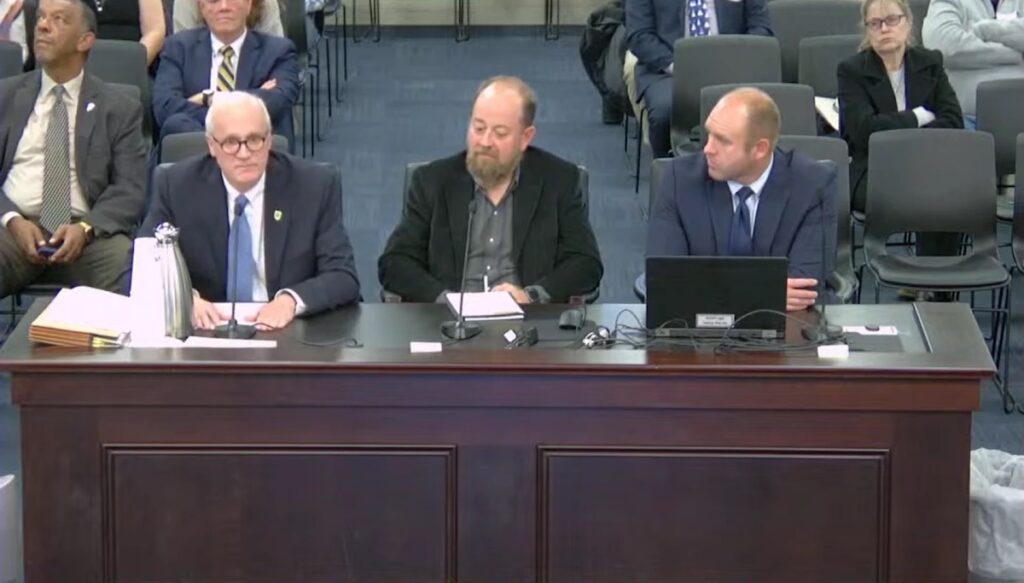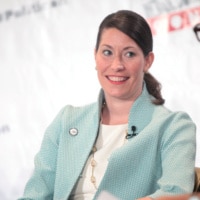One of Murray State University’s top legislative priorities for more than a year has been gaining approval from lawmakers for a new doctoral program for veterinary medicine. However, some lawmakers and veterinarians expressed concerns at a legislative committee meeting Thursday about the school’s proposed model and other ramifications of letting the far western Kentucky institution offer that program.
Officials from the consulting firm Deloitte, a company that the state contracted to produce independent reviews on four proposed doctoral programs at comprehensive universities in Kentucky, went over their findings about MSU’s veterinary school program at an interim agriculture committee meeting.
MSU’s president, Bob Jackson, has been a major proponent of the proposed school.
“A school of veterinary medicine at Murray State University is a win-win for this commonwealth. It’s only a positive in every respect,” Jackson said. “No one loses. We advance this initiative to help, to help find solutions, and we’ve worked to not hurt anyone or any group.”

Amy Wittmayer, a specialist leader with Deloitte, said that while the firm found some strengths in MSU’s proposal — such as strong student demand for the program — it also found concerns from industry stakeholders. Specifically, she said there are concerns in the industry that the proposed college of veterinary medicine is not the best solution to address the rural veterinarian shortage in Kentucky.
The far Western Kentucky university has proposed establishing a four-year veterinary medicine program — which would be the first in Kentucky’s history — that would admit around 70 students per class to launch in Fall 2027. That number, according to Deloitte’s findings, would climb to 280 students enrolled in the program by its fifth year.
Murray State currently offers degrees in pre-veterinary medicine and veterinary technology. The state also allocated $60 million to the school in the biennial budget passed earlier this year to build a new veterinary sciences building “to enhance existing and future programs.”
University officials also highlighted the existing Breathitt Veterinary Center in Hopkinsville, home to an animal disease diagnostics lab.
A bill that would have allowed Murray State to offer a doctoral veterinary medicine program passed the state House earlier this year, but died in a Senate committee. Murray State President Bob Jackson has said that Rep. Mary Beth Imes of Murray has submitted a bill request to file similar legislation in 2025.
The independent study estimates that MSU would need to hire 15 faculty — at salary rates that Deloitte officials say “far exceed” the average faculty salaries at the university — and 42 staff members and administrators for the program.
But lawmakers — including outgoing Sen. Damon Thayer — had several questions about its feasibility.
“Will it address the need [for more veterinarians] appropriately? Will it justify the huge taxpayer expense that is going to be made to support Murray’s desire to have a vet school? Will it end up with more veterinarians, specifically large animal veterinarians, in the rural areas of the state?” Thayer asked.
A need for more veterinarians?
Jackson said the prospective veterinary medicine program at MSU could help to solve Kentucky’s veterinarian shortage, especially those working in rural areas and those working with large farm animals.
However, according to a survey by the Kentucky Veterinary Medicine Association (KVMA), more than three-quarters of the state’s veterinarians surveyed said they did not think that the current lack of an in-state veterinary school is contributing to the Commonwealth’s rural veterinary shortage. Moreover, an analysis published earlier this year by the American Veterinary Medical Association suggests that the number of graduates from existing veterinary schools is likely to meet projected demand for services in 2035.
That study also found that the number of veterinarians would likely grow faster than the number of pet-owning households if the 13 additional programs currently seeking accreditation from AVMA’s Council on Education, including Murray State, are all approved.
At Thursday’s meeting, Jackson said the university’s agriculture school is receiving a $4.5 million estate gift that he said will be used to provide incentives for veterinary students to focus on large animal care in rural Kentucky.

What’s a distributive education model?
MSU’s board of regents adopted a resolution last year establishing a task force to explore the possibility of opening the first veterinary school in Kentucky. That group produced a feasibility study in October 2023 outlining what this program could look like. One of those elements included setting the school up under a distributive model.
In traditional veterinary schools, students do much of their clinical work at veterinary teaching hospitals on the college’s campus — such as at Auburn University in Alabama. But under distributive models — also known as clinical models – students receive much of their hands-on education off-campus at places like private practices, nonprofits and state and federal agencies.
The independent Deloitte study found that, while it typically costs less to operate a distributive model compared to a traditional model, there’s more complexity and risk involved with it. The firm said that Murray State would need an extensive network of more than 200 partners to help ensure students receive quality training.
Brian Parr, dean of Murray State’s Hutson School of Agriculture, told lawmakers that so far, 174 Kentucky veterinarians have expressed interest in serving as clinical partners if the vet school proposal moves forward.
The proposed model drew concern from three Kentucky veterinarians that spoke to lawmakers at Thursday’s meeting, echoing points raised at another recent legislative meeting.
James Beckman, a veterinarian at an equine practice near Louisville, said his clinic works with one veterinary student at a time with other programs that operate under a distributive model. He said one student is the most his clinic can handle at any given time to balance the workload demands of the practice. He is concerned about adding another distributive model to the mix.
“In equine, fewer and fewer of us are accepting students from distributive models, and that’s just because of the workload. That’s because we have to teach them so much, and we take it so seriously,” Beckman said. “Many of my colleagues are stepping out of that realm because they just can’t keep up with it anymore, especially with the increased number of distributive students coming from all over the country.”
State’s relationship with out-of-state veterinary programs
The lack of a school for veterinary medicine in the state hasn’t stopped Kentuckians from pursuing careers as vets because of arrangements with institutions in other states.
Auburn University’s veterinary school admits around 130 students every year to its program. Of that, 38 spots in each class are reserved for Kentucky residents through the Southern Regional Education Board contract. Similarly, Tuskegee University reserves three spots for Kentuckians. Kentucky students admitted to those programs can receive in-state tuition rates through the Kentucky Higher Education Assistance Authority.
According to the state-commissioned independent study, it cost Kentucky around $5.3 million in 2024 to fund these Kentucky students’ veterinary studies.
Deloitte’s review found that just over two-thirds of Kentucky veterinary students that attend those two programs return to work in the Bluegrass State upon graduation.
Philip Prater is a retired professor emeritus at Morehead State University. He told lawmakers that he considers the contract spaces, especially those at Auburn, to essentially act as in-state options for prospective veterinary students.
“[Auburn has] the resources, they have the facilities, they have the faculty, and it just scares me a little bit to throw all that out the door, to take on something that’s unknown,” he said.
However, Murray State’s president contended that adding a veterinary medicine program at the western Kentucky school wouldn’t interfere with the contracted spaces — unless either Kentucky or Alabama’s legislatures decided to make changes to that program.
“The area where we see the greatest need that’s not being served today is in the veterinary science area. And again, that’s why we brought this forward,” Jackson said. “What we’re proposing has nothing to do with Auburn University, a great university, great College of Veterinary Medicine. We support what has occurred there. Auburn’s very important to Murray State from the standpoint of our students being able to go to vet school there.”
Overall, Jackson said the vet school initiative is one step that his university is trying to take to help set Kentucky’s agriculture industry up for success in the years to come.
“Murray State University has been working hard to assist in finding solutions. Agriculture is a multi billion dollar industry. We need to take good care of it. We’re trying to do our part.”
(This story first ran on WKMS, the public radio station at Murray State University.)
Hannah Saad is the assistant news director for WKMS. Originally from Michigan, Hannah earned her bachelor’s degree in news media from The University of Alabama. Prior to joining WKMS in March 2023, Hannah was a news reporter at The Paducah Sun.






